
|
||
|
Portland art blog + news + exhibition reviews + galleries + contemporary northwest art
|
||
Michelle Ross at Elizabeth Leach Gallery by Ryan Pierce 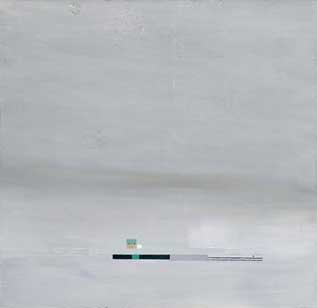 Ross' Outpost I Michelle Ross' new paintings, on display through July 28 at Elizabeth Leach Gallery, constitute a subtle and sublime travelogue through Italian landscape and architecture. A recent stint as a visiting artist at the American Academy in Rome has led to a suite of oil paintings and related works on paper that are even more understated and essentialized than we have come to expect from this veteran Portland abstractionist. Ross' last solo exhibition of paintings, at the short-lived Savage Gallery in 2002, was comprised of works in a decidedly different vein; post-Dave Hickey neon mash-ups-exploring a visual cacophony and a material excess that seems entirely absent now. The constants in Ross' arsenal are geometric abstraction á la Mondrian or Hans Hoffman, transient pencil lines that wobble their way across the picture plane, and acuity with color that somehow transforms unlikely chromatic bedmates into long-lost true loves. 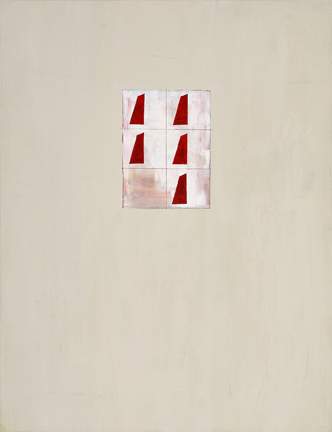 Untitled (Trastereve) In her current show, which is titled Some things change slowly enough to appear static, Ross employs a palette that seems culled from Giorgio Morandi's pale, warm world. Untitled (pale Red Violet), a 47 by 36-inch oil painting, is a layering of muted blue and mauve washes, with barely perceivable drips of turpentine-thinned pigment lending a corroded and aged look to the vigorous impasto ground. A tight diagram of shapes-some cryptic floor plan or icon of a building-overlays the whole quiet mess. Although composed from the hues of mold, moss and dinner mints, the painting somehow holds together, glowing from the gallery's corner. The works in Some things change… revisit these spare expanses of pastel hue, which are often punctuated by static shapes of striped towers and offset domes. The strongest moments arrive in the less formulaic compositions. Ross' contributions to recent group shows at the same gallery have included geometric abstractions that hint at figuration, and in this show we see strong references to representational landscape painting. Outpost I and Outpost II both contain squat tangles of multicolored rectangles near the bottom of a color-field. Outpost I is rendered over a thick and crusty ground, and a smog-brown haze hovers over the implied fortress. The sequel is smooth and austere-the wood substrate shows through layers of fragile glaze-and a cloud of dots, connected with pencil lines, evokes constellations above a red-tipped smokestack. 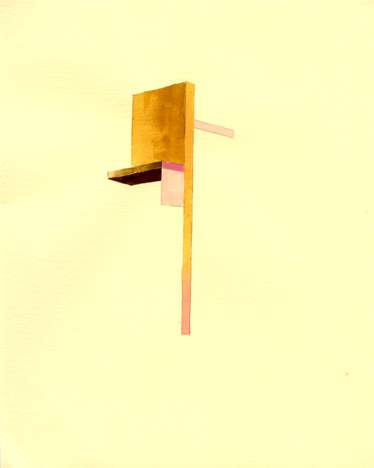 Untitled # 78 The exhibit includes a grid of nine small works on paper. These look like details of the larger pieces, with the finely worked birch panel or linen grounds replaced by pale toned pages. The standout here is Untitled # 78. With just a few diagonal lines and some blotchy color fades, it's the only piece in the show that hints at pictorial depth. The cryptic jumble of planes (a flurry of rusty yellow tones that fade to pink and brown) flirts with perspective in a way that activates the little piece more than any of the larger, bolder works. I hope that Ross' characteristic restraint and internal editing allow future exploration in this direction. Ross' paintings are firmly grounded in the tropes and traditions of modernism. It's worth making a distinction, however, between the artists who plumb those depths to reexamine modernism's legacy for fresh ideas and those who work in modernist modes without acknowledging that an alternative exists. Ross is in the former camp. Her work is refreshingly free of the gimmicks that crowd a lot of abstraction these days (think Tim Bavington's song notation or Matthew Ritchie's meta-narratives) and, apart from an architectural specificity, are allowed to be direct and painterly. Ross' sincerity and investment likens her to artists such as Agnes Martin, Mary Heilman, and Robert Mangold. Her current experiments link the classical and the modern with grace and reverence, leaving plenty of open space for whatever happens next. Ryan Pierce is a Portland-based artist recently graduated with an MFA from California College of the Arts (2007). His work has been exhibited nationally and internationally and is available through Lisa Dent Gallery in San Francisco and Richard Heller Gallery in LA. Posted by Ryan Pierce on July 13, 2007 at 15:23 | Comments (3) Comments Thanks for this Ryan. Ross was the first Portland artist I encountered. I saw her Pond Series (at Quartersaw) back In 1998 when I was scouting Portland out. I moved out here in 1999 and I liked her next series even more... very material based almost like Brenden Clenaghen's mature work and thought it was excellent. Anyways, I found the next series (at Savage)problematic... and I saw less of Hickey's influence than Richard Tuttle. Still the work seemed a bit awkward, it had all this stuff from dryer lint to oil paint on sometimes raw birch panels (I know Hickey warned his UNLV students to be careful of using raw plywood because everyone was doing it back in 1999). I'd argue that Bavington's stripes aren't a gimmick as his work uses the music structurally to determine the width and colors of the stripes (if its a gimmick then a lot of important structually conceptual art is guilty of it too. I just don't buy it). Of course to each his own but to me his work is about complicating the stripe with John Cage like conceptual structuralism, not just sucking at the teet of modernism. (I wonder if anyone even cares about the issue of modernism/postmodernism anymore? It is probably a good thing.) I guess Ross' previous materialistic works seemed put on, like fashion. They were like designer sample boards that were trying to be installation but were too crafty, hemmed in and fussily tied to painting's rectangles to really come alive. Some are good though.. the one in PAM's NW Wing is probably the best of that bunch. An intermediary style, that was probably better in theory than practice. What I like about this latest series are how open they are, more generous and less like compulsively collected artist materials. Still, I'd say this series is more Ciao Fonseca than Agnes Martin in feel. There is a really hard, "no intermediary", almost arid directness about Martin's austere output that I dont get in this work (though I like its very prepared softness, very Italianate). The softness is an element which I havn't seen so developed from her since the Pond series (way back in the 20th century). My favorites in this show are the small Malevich-like paintings... they arent fussy and are really refined. I'm also glad the show isn't overhung. It is a good, possibly too polite show but I wonder if it could be much softer... what if this work were become polite to a fault on purpose? Once again thanks Ryan, glad you came back to Portland after grad school and I've appreciated your recent comments on PORT too. Posted by: Double J Ryan's review is one of the most thoughtful and well-written pieces featured on PORT in months. Thank you, Ryan. I look forward to your future contributions. Posted by: MB Also, with PORT's redesign I'm working on making it better set up to take guest contrbutors. I'd like to see essays become part of our regular publishing too. ...Which is all to say, we are actively seeking more guest writers. Posted by: Double J Post a comment Thanks for signing in, . Now you can comment. (sign out)
(If you haven't left a comment here before, you may need to be approved by
the site owner before your comment will appear. Until then, it won't appear
on the entry. Thanks for waiting.)
|
| s p o n s o r s |
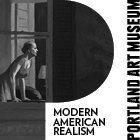 |
 |
 |
 |
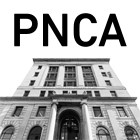 |
 |
 |
 |
 |
 |
 |
 |
 |
 |

|
Site Design: Jennifer Armbrust | • | Site Development: Philippe Blanc & Katherine Bovee | |


![[TypeKey Profile Page]](http://www.portlandart.net/nav-commenters.gif)